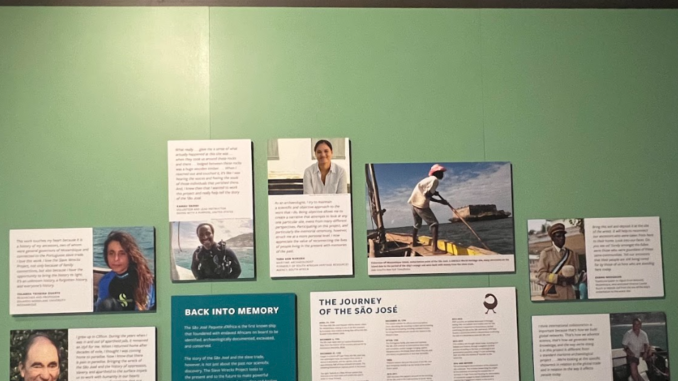
By Daniel Afanasyev
Through the support of the Africana Studies Department and the Caribbean Studies Program, Brooklyn College hosted “The Search for America’s Hidden Slave Ships” on Feb. 27 with guest speaker Kamau Sadiki. Sadiki is the lead instructor in the “Diving With a Purpose” (DVP) underwater archeology program, and presented his experience in exploring and documenting the wrecks of vessels involved in the Transatlantic Slave Trade.
Sadiki, a retired civil engineer, general aviation pilot, and scuba diver, is one of the discoverers of the “Clotilda”: the last slave ship known to have brought enslaved Africans to the United States. The “Clotilda” remains the most valuable shipwreck to have been found as it is the only ship containing an intact cargo hold.
To Sadiki, the group actively engages with the issues of how best to remember the lives lost along the route. In contrast to the predominantly touristic nature of underwater exploration, DWP is a passion project led by a group of divers and archeologists seeking to resurrect an ancestral connection and cultural heritage. They do so by substantiating the vessels and the lives lost in this episode of history.
“One of the main issues that we engage with, is how do we decolonize, reframe the narrative around this experience of African enslavement,” Sadiki said. “Remembering, and bringing these people back into our memory is critically important.”
The group has previously documented vessels such as the “São José-Paquete de Africa,” “The Guerrero,” and “The Clotilda.” DWP has previously partnered with the National Museum of African American Heritage and Culture in Washington D.C., which exhibits some of the shipwrecks that Sadiki worked on.
In his work with the vessels, Kamau said that one of the central objectives lies in, “raising those voices from the sea. Those 12 million or so voices that have never been heard–no one has ever acknowledged them–they have essentially been erased.”
It is estimated that 12,000 vessels had partaken in the Transatlantic Slave Trade, making some 40,000 voyages, and 1,000 of which had been involved in some sort of wrecking event. According to Sadiki, only 10 out of the 12,000 have been archaeologically recorded.
Apart from archeology and science, Kamau stressed the importance of the “spiritual dimension” in his work, which he reported to have had a very tangible effect on him when he would descend to the vessels and the places where those aboard had last been alive.
“I remember when I first came around these rocks, and saw this wooden member, laid eyes on it, that was my first visual of any artifact recovered from a slave vessel. I went up and I just grabbed it. Once I touched it, I had this incredible sensation that went through my body,” Sadiki said. “I could actually hear the screaming, and the pain, and the suffering of those 212 people as they went into the water. That was an incredible experience, and that carried me forward in doing this work.”
By discovering and documenting these vessels anew, Sadiki seeks to restore the collective memory and correct the historic injustice suffered by the people aboard these ships. In this effort to acknowledge these forgotten ships and the lives lost, Sadiki, along with the National Association of Black Divers, placed a 1993 plaque memorializing the lives aboard the “Henrietta Marie,” a British vessel that wrecked in the Florida Keys.
After the presentation, a screening of the Netflix documentary “Descendant” took place, in which Sadiki is featured. The film shows the descendants of those lost and the ways in which they try to memorialize them. Sadiki’s quest for honoring the voices lost continues, honoring their legacy through the dives.
